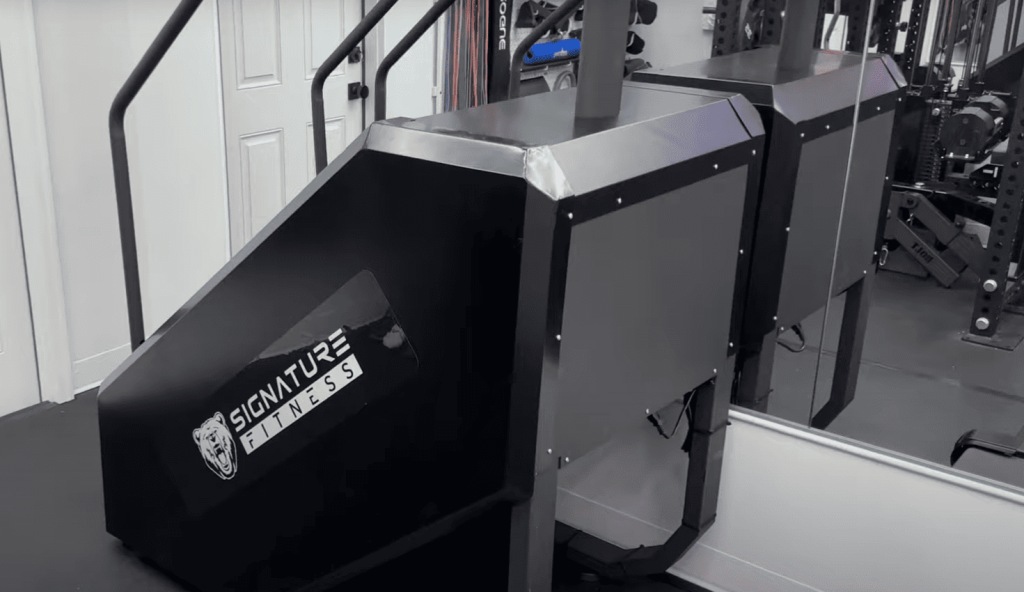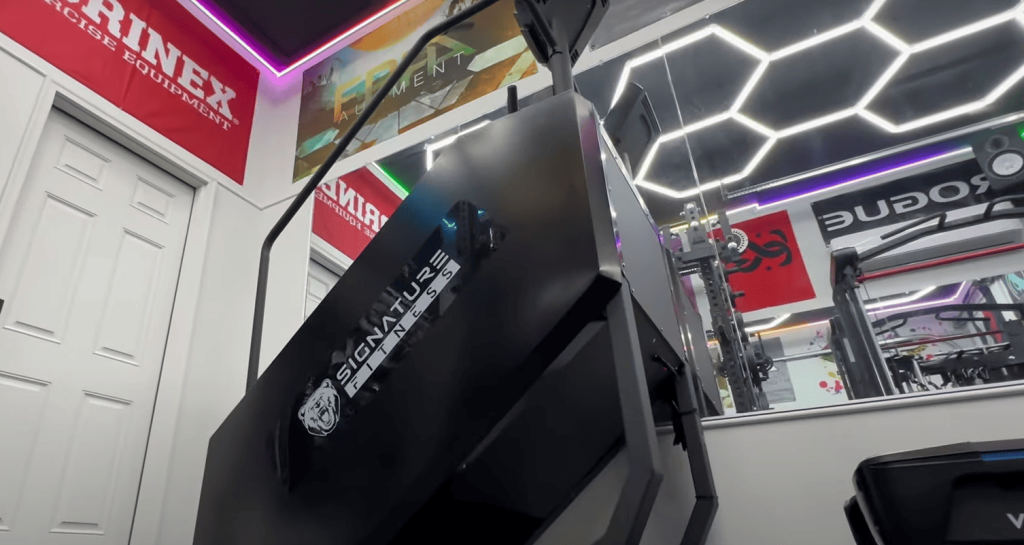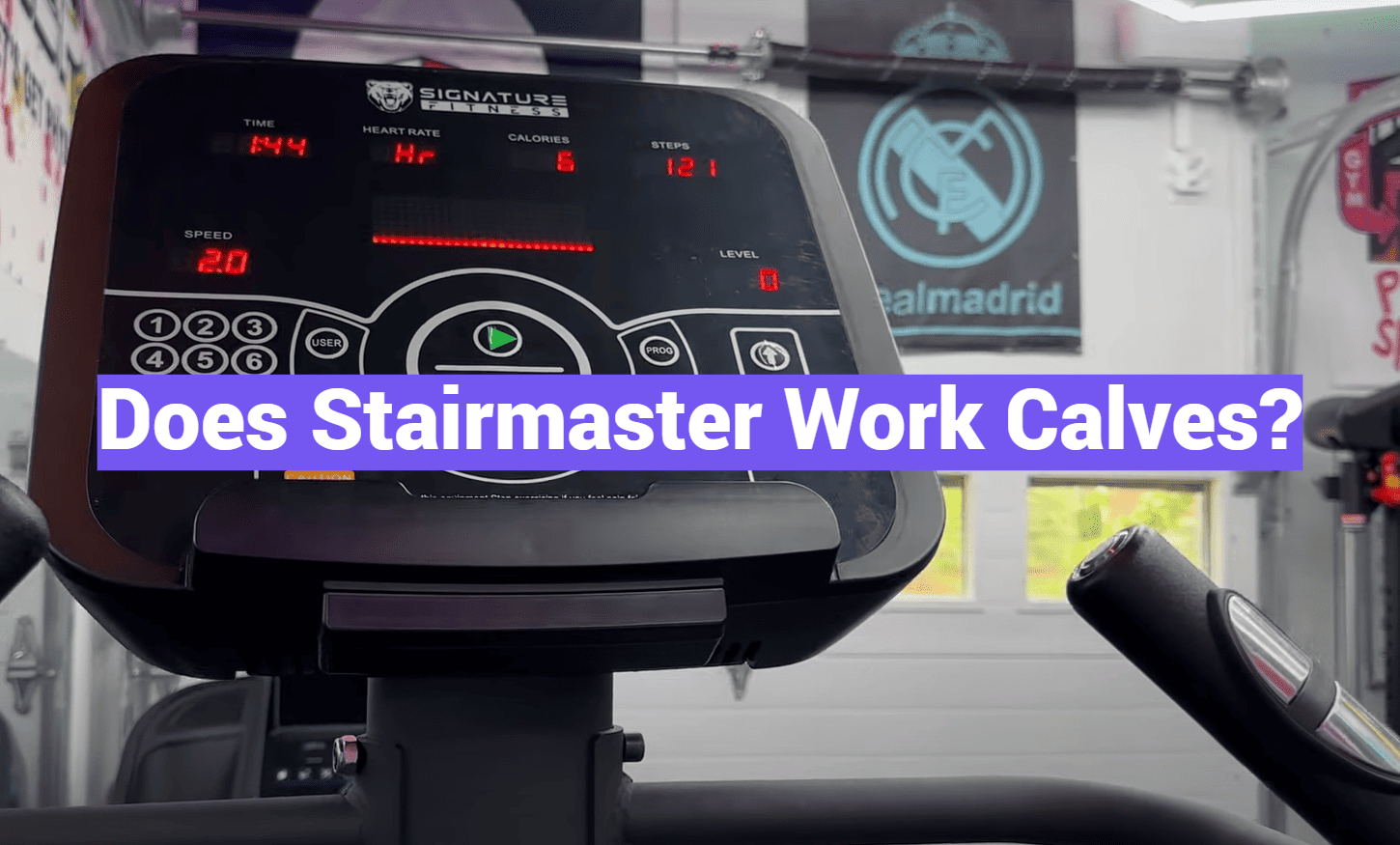Did you know your lower legs generate 70% of the power needed to climb stairs? This surprising fact highlights why stair-based exercises remain one of the most efficient ways to develop lower-body strength. When using equipment like the StairMaster, every upward motion relies heavily on the gastrocnemius and soleus—the twin engines driving your movement.
These muscles work harder here than during standard cardio routines. Each step demands explosive push-offs and precise stabilization, creating constant tension from heel to knee. The result? A dual-action workout that builds endurance while sculpting lean muscle.
Unlike treadmills or ellipticals, this machine mimics natural stair climbing. Your body weight becomes resistance, forcing your calves to engage through their full range of motion. Regular sessions improve balance and blood flow, reducing stiffness during daily activities.
This guide breaks down the science behind effective calf training. You’ll learn how to adjust speed, posture, and intensity to maximize results. Whether aiming for definition or explosive power, understanding these mechanics helps transform your routine.
Key Takeaways
- Stair climbing activates calf muscles more intensely than many traditional cardio workouts
- The gastrocnemius and soleus work together to propel upward movement and maintain balance
- Natural resistance from body weight enhances muscle engagement with each step
- Consistent use improves both cardiovascular health and lower-body strength
- Proper form adjustments can increase calf activation by up to 30%
Overview of the Stairmaster and Its Benefits
Ever wondered how gym equipment can mimic real-life movements? The stair stepper answers this by replicating stair-climbing mechanics through rotating steps or vertical pedals. This low-impact machine lets users control speed and resistance, making it adaptable for all fitness levels.

What Is a Stair Stepper and How Does It Function?
Modern stair climbers use two designs: rotating staircases or hydraulic pedals. Both versions create continuous motion, forcing your legs to push upward against resistance. Adjustable settings let beginners start slow while athletes ramp up intensity for HIIT sessions.
The machine’s upright design naturally engages core muscles. This promotes better posture compared to treadmills. Users maintain stability through controlled movements, reducing joint strain.
Cardiovascular and Lower Body Advantages
Climbing stairs elevates your heart rate faster than walking. A 30-minute session torches significant calories while building leg endurance. Check how body weight affects energy burn:
| Body Weight | Calories Burned (30 mins) |
|---|---|
| 125 lbs | 180 |
| 155 lbs | 223 |
| 185 lbs | 266 |
This exercise strengthens quads and glutes too. Its joint-friendly design makes it ideal for long-term fitness routines. Regular use improves lung capacity and overall stamina.
Understanding Lower Body Muscles Engaged in Stair Climbing
Think of stair climbing as a symphony of muscle activation. Each upward step coordinates multiple groups in your legs and core, creating strength that translates to real-world movements like hiking or carrying groceries. Let’s break down how this dynamic exercise shapes your physique.
Power Players: Glutes, Quads, and Hamstrings
Your quadriceps act as the engine room during climbs. These front-thigh muscles handle up to 80% of your body weight with every push-off. Just behind them, hamstrings team up with your glutes to control hip extension and knee bends.
“The gluteus maximus isn’t just for looks—it’s your body’s powerhouse,” explains a sports physiologist. This muscle group fires intensely during each upward drive, sculpting strength while protecting your lower back.
Calves: The Silent Stabilizers
While larger muscles dominate the show, your gastrocnemius and soleus work overtime. They stabilize ankles during push-offs and absorb impact with every step. This dual role enhances balance and prevents wobbles on uneven surfaces.
Stair climbing uniquely challenges these smaller muscles. Unlike flat-ground cardio, the angled motion forces calves to engage through their full range—building endurance for activities like sprinting or jumping.
does stairmaster work calves? Debunking Myths and Revealing Facts
Have you ever questioned which muscles truly power your climb? While many focus on quads and glutes during vertical training, your lower legs play an equally vital role. Let’s separate fitness folklore from physiological reality.

Mechanics of Calf Engagement on a Stair Climber
Every upward drive creates a dual challenge for your lower legs. During the push-off phase, your gastrocnemius contracts like springs, propelling you upward. Meanwhile, the soleus maintains tension as you shift weight to the next step.
Research reveals these muscles activate 28% more on stair equipment versus flat surfaces. “The angled motion forces calves to work through their full range,” notes a 2023 biomechanics study. This constant engagement builds endurance while improving ankle stability.
Improving Calf Endurance Through Proper Technique
Posture determines how effectively you train these muscles. Leaning forward transfers effort to thighs, while standing tall keeps body weight centered over your feet. Try this test: release handrails momentarily – if you wobble, your calves need more engagement.
| Technique Adjustment | Calf Activation Increase |
|---|---|
| Upright posture | 22% |
| Full foot placement | 18% |
| Controlled tempo | 15% |
Consistent climbers develop better balance during lateral movements. This translates to real-world benefits like confident hiking strides or explosive basketball jumps. Remember: quality steps beat rushed repetitions for lasting strength gains.
Enhancing Overall Lower Body Strength with Stair Climber Workouts
Gym enthusiasts often face a dilemma: choosing between high-impact exercises and muscle-specific training. The stair stepper machine bridges this gap by combining cardio demands with targeted lower body strength development. Its vertical climbing pattern challenges muscles differently than flat-surface activities, creating adaptable resistance that evolves with your fitness level.
How Stair Training Stacks Up Against Alternatives
While running and walking engage similar muscle groups, stair climbing triggers 28% greater activation in glutes and hamstrings according to biomechanical studies. The machine’s design maintains constant tension through each upward drive—something free weights can’t replicate during squats or lunges.
Compare these two popular lower body workouts:
| Activity | Calories/Hour* | Joint Impact | Muscle Focus |
|---|---|---|---|
| Stair Climber | 400-600 | Low | Full posterior chain |
| Running | 500-800 | High | Quads/calves |
*Based on 155 lb individual
Three key advantages make this equipment stand out. First, adjustable resistance settings allow progressive overload without added weights. Second, the controlled environment eliminates uneven terrain risks found outdoors. Third, the upright position engages core muscles better than seated leg presses.
“The stair climber’s real power lies in movement patterns,” notes trainer Alicia Monroe. “It builds functional strength for carrying packages upstairs or chasing a bus—not just gym performance.” Regular users often report improved balance during lateral movements and explosive jumps within 6-8 weeks.
Effective Workout Routines and Tips for Lower Body Gains
Structured routines transform casual gym visits into muscle-building opportunities. Tailoring your approach to fitness levels ensures steady progress while minimizing plateaus. Let’s explore strategies that adapt to your current abilities while pushing boundaries safely.

Routine Variations for All Experience Levels
Newcomers thrive with 10-15 minute sessions at moderate speed. Focus on full foot placement and controlled breathing. “Consistency beats intensity during the first month,” advises trainer Jamie Carson. Build endurance before increasing difficulty.
| Level | Time | Focus |
|---|---|---|
| Beginner | 10-15 min | Form mastery |
| Intermediate | 20-30 min | Interval bursts |
| Advanced | 30-45 min | HIIT/resistance |
Seasoned athletes benefit from alternating between speed challenges and weighted vests. This variation shocks muscles while boosting calorie expenditure.
Safety Protocols for Lasting Progress
Leaning on rails reduces lower body engagement by 40% according to biomechanics research. Keep hands lightly resting, not gripping. Engage core muscles to maintain upright alignment.
- Complete dynamic stretches pre-workout
- Gradually increase resistance every 2 weeks
- Monitor heart rate zones for optimal effort
Shallow steps limit muscle activation. Drive through heels during ascent, then lower slowly. This technique builds explosive power while protecting joints. Pair these methods with proper hydration for gym sessions that deliver visible results.
Conclusion
Transforming your fitness routine requires tools that deliver multi-dimensional results. The stair stepper machine stands out by blending cardio intensity with targeted muscle development. Its design challenges your lower body through natural climbing patterns, creating adaptable resistance that evolves with your strength.
Consistent use engages key muscles from hips to ankles. Proper posture and foot placement amplify these effects, turning each session into a full-chain workout. Unlike isolated exercises, this approach builds functional power for daily movements like carrying groceries or chasing kids.
Balance speed adjustments with technique refinements for optimal gains. Beginners and athletes alike benefit from the equipment’s versatility. Over time, improved ankle stability and body coordination become noticeable perks beyond muscle tone.
Whether aiming for endurance or definition, stair-based training offers lasting value. Pair it with dynamic stretching and hydration to maximize results. Your next step toward stronger legs starts here—one climb at a time.

